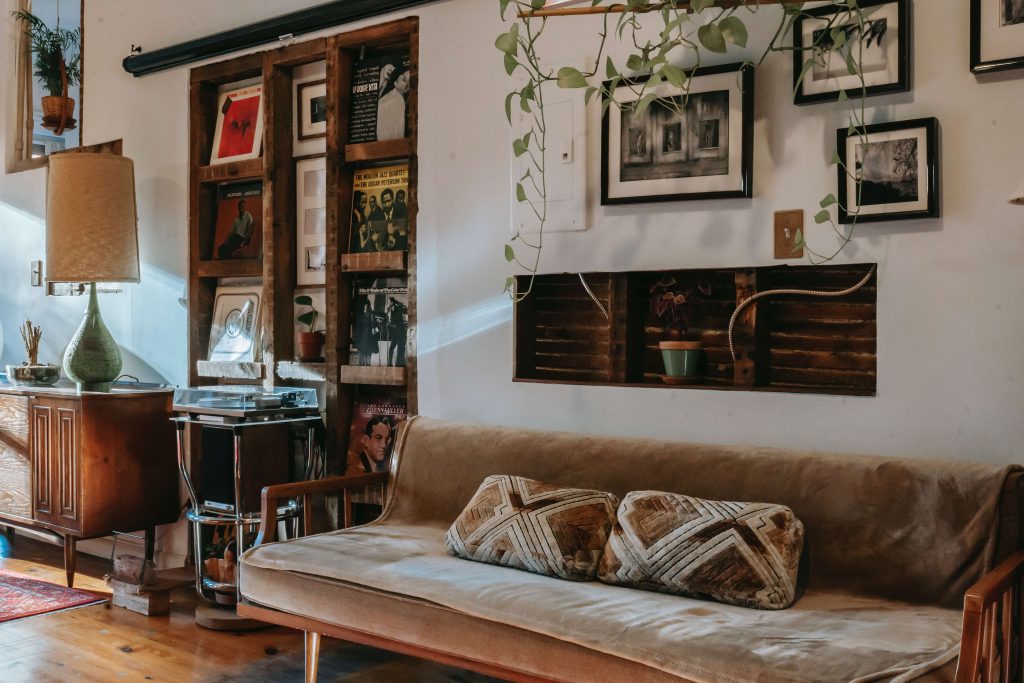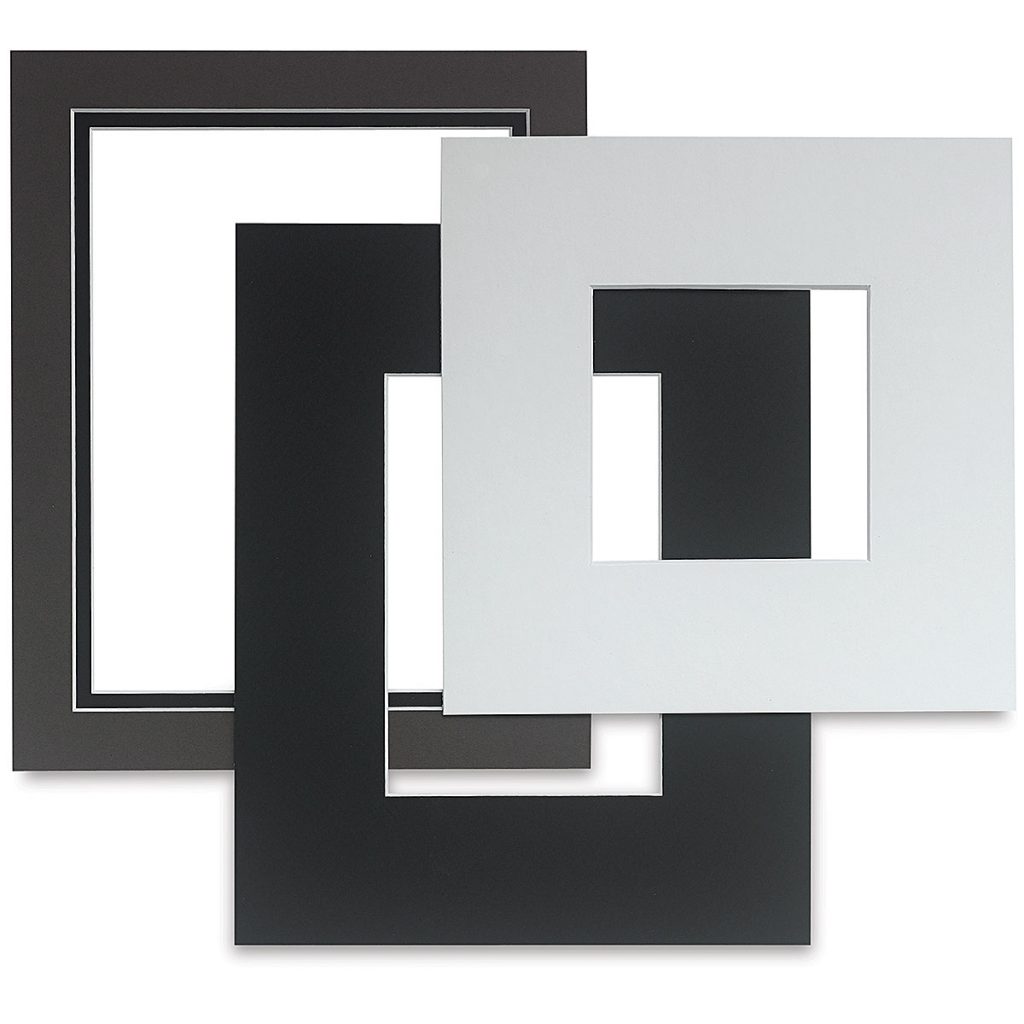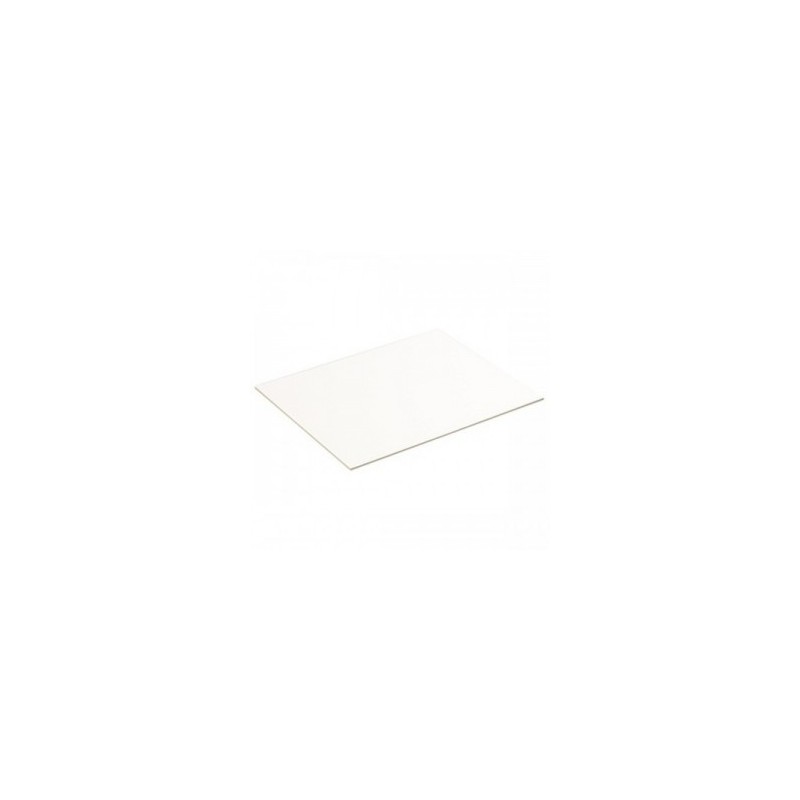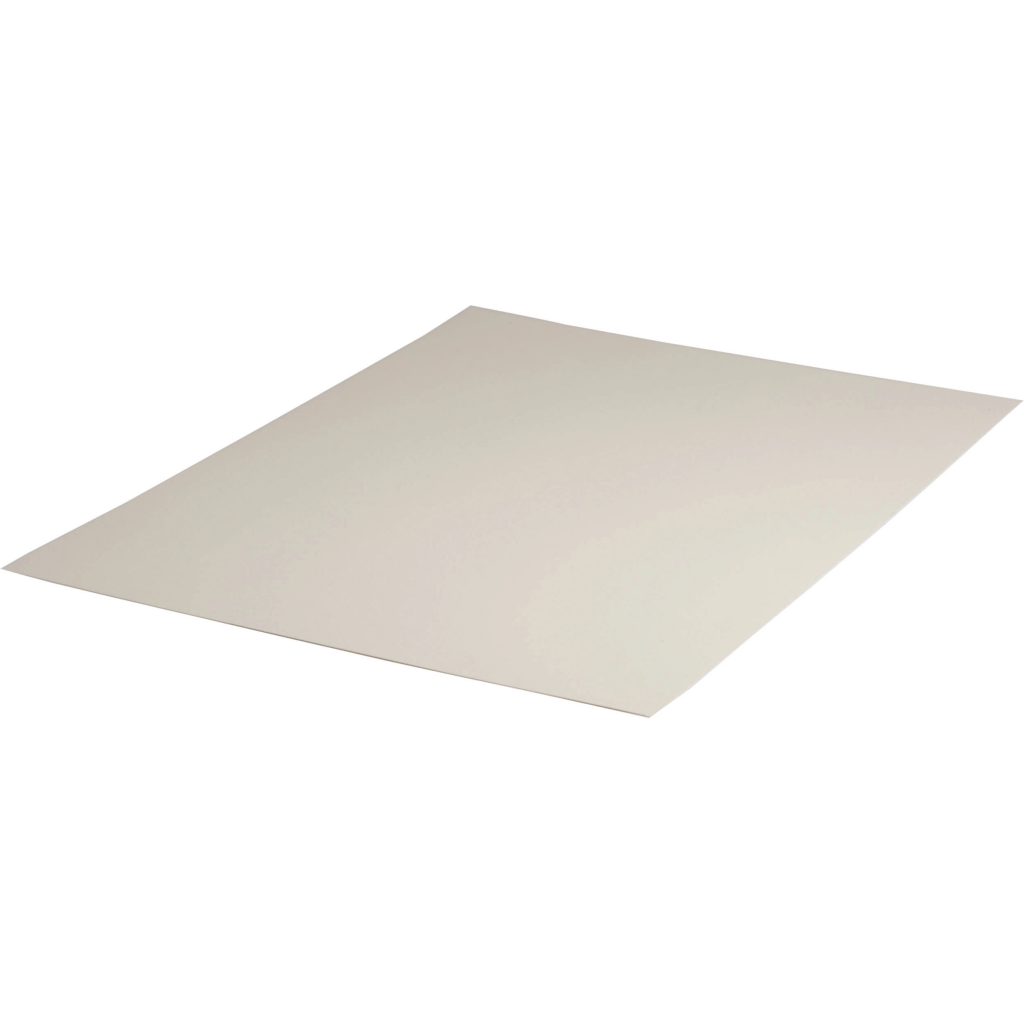When picture framers use the word “board,” they are usually referring to various types of paper board sheets. Matboard is a type of paper board made specifically for picture framing. There are two main types of construction. The most common is made of layers of paper, with a color sheet attached to the top and a liner sheet on the bottom. This type of matboard comes in hundreds of surface paper colors and many patterns, such as marbled, speckled, or printed with designs. The core of the board, which shows when the mat is cut with a traditional bevel, is usually some version of white or off-white, although there are some specialty matboards with a black or other color core. A second and much less common kind of matboard is made by compressing cotton pulp into a solid sheet, with color throughout the board. This method is used to make fine-quality boards for museums, art collectors, and professional framers to store and frame highly valued artwork. This board may sometimes be called “rag” board; the term comes from the history of paper manufacturing that included the use of cotton rags.

Matboard Thickness
The thickness of a matboard varies by type of board and manufacturer, but it is generally in the 1/16″ (2 mm) range. This thickness provides a sturdy support for artwork, and the core creates an attractive bevel that inclines toward the artwork when the opening is cut with a 45-degree mat cutter. Thicker boards (called 8-ply) are also available for a deeper bevel. Matboard is made in two standard sizes: 32″ × 40″ (81.3 cm × 1 m) and 40″ × 60” (1 × 1.5 m), although some framing supply distributors sometimes make smaller pieces available.
Acids in Matboards
The term “acid-free” is seen widely in the craft, hobby, and picture framing industries, as people become more aware of the harm that acids can cause. Matting is one place in picture framing where acidity really matters, because the matting will be in continuous direct contact with the artwork, and acids are harmful to most types of art. Acids can cause artwork to become yellow and brittle. Over time, acids in matboards can create a golden brown “burn mark” wherever the acidic mat touches the art. Because there is sometimes “acid migration,” meaning acids can move around in the frame, even acidic boards that do not touch the art can cause harm.
Avoiding Acids
There are two ways for a product to be acid-free. First, it may be inherently non-acidic, as is the case with cotton, polyester and acrylic. The second way to be acid-free is by “neutralizing” the acids in a product. With paper products, such as matboards, the neutralizing is accomplished by adding a highly alkaline substance such as calcium carbonate (the essential ingredient in baking soda) to the manufacturing process. It is common practice to add not just enough calcium carbonate to make the paper products neutral pH, but also a little extra to create a buffer. These “buffered” products will remain acid-free even when new acids are encountered— for a while. How long will it be before deteriorating wood fibers and acids from air pollution use up all of the buffering, and the product becomes acidic? This question is a source of debate in the paper industry, but for matboards, it is probably years and might even be decades.
Lignin-Free –Understanding pH Scale
Some craft products state that they are lignin-free. Lignin is a highly acidic substance found in plants, including wood, and is responsible for deterioration in paper and boards, such as in the yellowing of newsprint. Because products can be made acid-free by neutralizing rather than removing the acids present in the product, there may be lignin still present in an acid-free product; this lignin could become harmful to framed artwork in the future if the neutralizer wears off. All lignin is removed from or neutralized in archival paper and boards such as conservation and museum matboards. Products measuring higher than 7 on the pH scale are alkaline, while products measuring below 7 are acidic. Products that measure exactly 7 are considered neutral, or acid-free.
Types of Matboard
There are several types of matboard. Different types serve different purposes. By understanding the basic information about the three basic types, it should be possible to evaluate the suitability of any type of matboard.
Standard Matboard
This “regular” matboard is made with an acidic wood pulp core (usually buffered), with wood pulp or cotton surface papers (typically not buffered.) The core is usually off-white or cream, and may darken with age as acids in the board act on the wood pulp fibers. Some boards may have a white or black core. If buffered, standard matboards may last for decades without significant change, so it is suitable for framing all types of decorative art. Standard matboard is available in a wide range of surface paper colors. This is the most readily available and most popular board for the do-it-yourself picture framer.

Museum Matboard
This board is a solid sheet made from compressed 100% cotton pulp. Although cotton is naturally acid-free, these boards are usually buffered to create a slightly alkaline chemistry. It is also available un-buffered for certain types of old photographs that are sensitive to alkalinity. Because the board is a solid sheet, the surface, core, and back are all the same color. The color range is limited, mostly white, cream, and neutral colors plus a small selection of pastel colors and black. It is used in museums and in professional framing for highly valued art.

Conservation Matboard
This board is made with a purified wood pulp (conservation board) or natural cotton (rag) core and surface papers. All acids, lignin, and other harmful ingredients are removed, then all parts of the board are buffered to protect against environmental acids. This is the board recommended by many professional framers for most artwork, because it offers excellent protection for the art and can be trusted to remain stable for many years. The core of these boards is usually white, and will stay white. A few colors are available with a black core. Conservation and rag matboard is available in a wide range of surface paper colors. Retailers may call this “archival,” “conservation,” or “museum grade” matboard.

Unsuitable Boards for Mats
Mats can be cut from poster board, corrugated cardboard, even construction paper. But these products are not suitable for quality picture framing. They are made for temporary display purposes, and they will fade and deteriorate over time. They are also highly acidic, damaging artwork if left in contact with it for a long period.